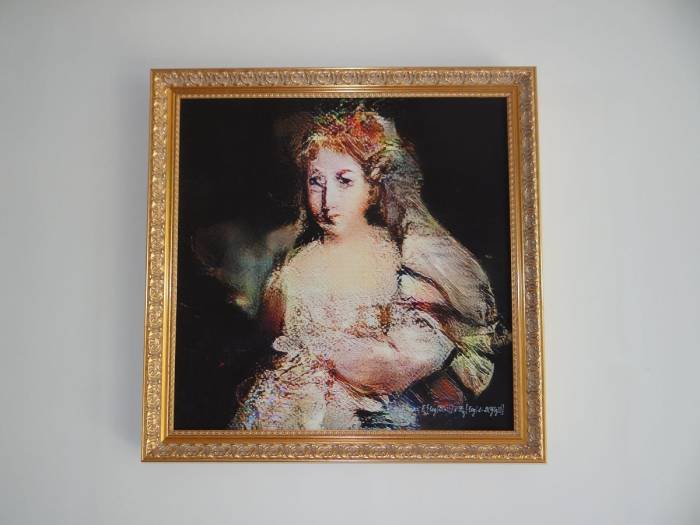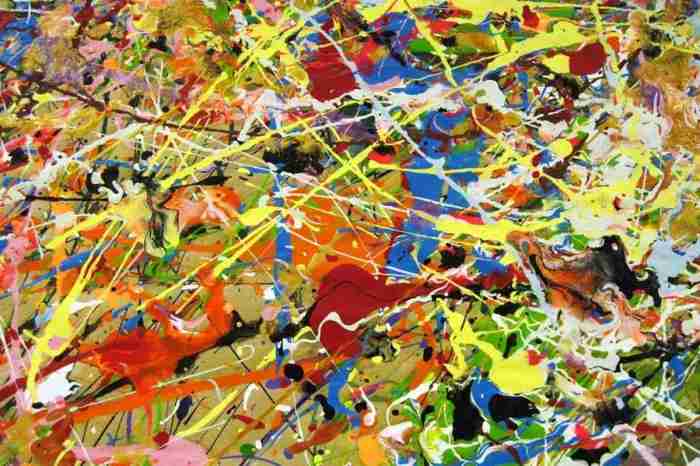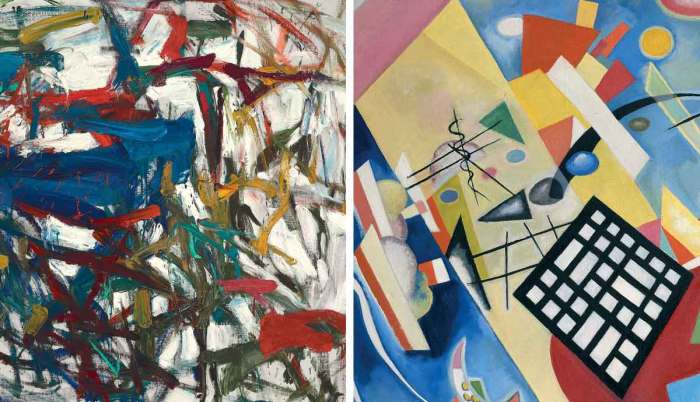Manifest Art: Dive into a captivating world where artistic expression intertwines with intention and visualization. This unique art form transcends traditional boundaries, blending creative techniques with the power of belief. From its historical roots to its contemporary applications, we’ll explore the core principles, methods, and profound impact of manifest art, revealing its ability to shape both individual lives and cultural landscapes.
We’ll delve into the techniques used, examining the materials, processes, and the crucial role of intention in bringing these artistic visions to life. Discover how recurring themes and societal influences have shaped the evolution of manifest art, and explore its surprising connections to spirituality and philosophy. We’ll also examine its influence on other art forms, its commercial reception, and its potential future trajectory in a rapidly evolving world.
Defining “Manifest Art”
Manifest art, a term encompassing various artistic expressions, centers on the power of intention and visualization to shape reality. It’s a practice where the creative process itself becomes a tool for manifestation, reflecting the artist’s desires and beliefs onto the physical plane. This approach transcends traditional artistic boundaries, integrating spiritual and philosophical concepts into the creative act.
Core Principles of Manifest Art

Manifest art operates on several key principles. Intentionality is paramount; each stroke, color choice, and composition element carries a specific purpose aligned with the artist’s desired outcome. Visualization plays a crucial role, as artists mentally envision the completed artwork and its intended effect before beginning the creative process. The process itself is considered a form of meditation or ritual, enhancing the connection between the artist’s intention and the manifested result.
Belief in the power of manifestation is also essential for effective practice.
Historical Context and Evolution of Manifest Art Movements
While “manifest art” as a formally defined movement is relatively recent, its underlying principles resonate with historical artistic practices. Think of ancient cultures’ ritualistic art, where creation served a spiritual or ceremonial purpose. Modern manifestations can be traced to various artistic and spiritual movements, including the New Age movement and various forms of expressive therapies that utilize art as a means of self-discovery and personal growth.
The evolution of manifest art mirrors the broader shifts in societal perspectives on spirituality, intentionality, and the power of the mind.
Comparison of Manifest Art with Related Artistic Styles
Manifest art shares similarities with other art forms but distinguishes itself through its core focus on manifestation. While it overlaps with certain aspects of abstract expressionism (emotional expression), it differs in its explicit intention to shape external reality. Similarly, while it shares a connection with conceptual art (emphasis on idea over form), manifest art emphasizes the transformative power of the creative process itself, rather than solely relying on the concept’s intellectual impact.
The integration of spiritual beliefs sets it apart from purely secular art forms.
Prominent Artists Associated with Manifest Art
Attributing specific artists solely to “manifest art” is challenging due to the broad and somewhat nebulous nature of the term. However, many artists whose work embodies the principles of intention and visualization can be considered within this context. Artists working with intuitive painting, visionary art, and certain forms of spiritual art often align with the underlying philosophy of manifest art.
Specific names are less important than understanding the underlying principles at play in their work.
Manifest Art Techniques and Methods
The techniques used in manifest art are as diverse as the artists themselves. The emphasis is less on a specific style and more on the intentional application of artistic methods to achieve a desired outcome. Materials and techniques are chosen based on the artist’s intuition and the specific manifestation goal.
Common Materials and Tools Used in Manifest Art Creation
A wide array of materials can be used, depending on the artist’s preference and the nature of their intention. Common materials include paints (acrylics, oils, watercolors), collage elements, mixed media, sculpting materials (clay, resin), and even digital tools. The choice of materials is often guided by intuition and the symbolic meaning associated with them.
Different Techniques Employed in Manifest Art Production
Techniques range from traditional painting and sculpting to more unconventional methods. Intuitive painting, where the artist allows their subconscious to guide their brushstrokes, is a common approach. Collage can be used to combine symbolic imagery representing desired outcomes. Digital art offers unique possibilities for layering and manipulating images to reflect intentions. The key is the intentional application of the chosen technique.
Step-by-Step Guide for a Specific Manifest Art Technique: Intuitive Painting
| Step | Action | Materials | Notes |
|---|---|---|---|
| 1 | Prepare your workspace and gather materials. | Canvas, paints (acrylics recommended), brushes, water container, palette | Create a calm and focused environment. |
| 2 | Close your eyes and visualize your desired outcome. | None | Focus on the feelings associated with your goal. |
| 3 | Begin painting without overthinking. | Paints, brushes | Let your intuition guide your brushstrokes and color choices. |
| 4 | Continue painting until you feel a sense of completion. | Paints, brushes | Trust the process; don’t strive for perfection. |
Role of Intention and Visualization in the Manifest Art Process
Intention and visualization are the cornerstones of manifest art. The artist’s clear intention sets the creative process in motion, while visualization helps to solidify that intention and maintain focus throughout the creation process. The act of creating becomes a ritual of focusing and reinforcing the desired outcome. The more clearly the artist visualizes their goal, the more effectively they can channel their intention into the artwork.
Manifest Art and its Themes
Manifest art often explores themes related to personal growth, abundance, healing, and spiritual awakening. These themes are often interwoven with the artist’s personal journey and beliefs.
Recurring Themes and Motifs within Manifest Art
Common themes include: abundance (represented by overflowing imagery), healing (symbols of restoration and wholeness), transformation (metamorphosis or evolution imagery), spiritual awakening (light, enlightenment motifs), and connection to nature (organic forms and natural elements).
Relationship Between Manifest Art and Spiritual or Philosophical Beliefs
Manifest art is deeply intertwined with various spiritual and philosophical perspectives. Belief systems emphasizing the power of intention, visualization, and the interconnectedness of all things often inform the artist’s creative process and the themes explored in their work. The creation itself can be seen as a form of spiritual practice, a way to align one’s intentions with the desired reality.
Visual Representation Showcasing Key Themes of Manifest Art

Imagine a vibrant canvas depicting a sunrise over a lush landscape. The sun, radiating golden light, symbolizes abundance and spiritual awakening. A flowing river meanders through the landscape, representing transformation and the continuous flow of life. Healthy, vibrant trees and flowers suggest healing and connection to nature. The overall effect is one of hope, renewal, and the realization of potential.
Impact of Societal Influences on Manifest Art Themes
- Increased interest in spirituality and mindfulness has fueled the growth of manifest art.
- Social media’s emphasis on visual culture has influenced the dissemination of manifest art.
- Growing awareness of mental health has led to the use of manifest art in therapeutic settings.
- Environmental concerns have inspired artists to incorporate nature-based themes into their work.
- The rise of self-help and personal development movements has increased interest in the power of intention and visualization.
The Impact and Reception of Manifest Art
Manifest art’s impact is felt across various domains, from its influence on other art forms to its growing presence in contemporary society.
Influence of Manifest Art on Other Art Forms
Manifest art’s emphasis on intention and visualization has influenced other art forms, particularly those focused on emotional expression and personal transformation. Its principles can be seen in various therapeutic art practices, where the creative process itself is a tool for healing and self-discovery. The focus on intuitive creation has also influenced certain contemporary art movements.
Critical Reception and Interpretations of Manifest Art Throughout History
Given the relatively recent emergence of “manifest art” as a formally recognized category, a comprehensive historical analysis of critical reception is difficult. However, the underlying principles of intentionality and visualization have been subject to critical discourse within the broader contexts of art history and philosophy. Some critiques might focus on the potential for subjectivity and lack of objective criteria for evaluating such art, while others might celebrate its potential for personal growth and self-expression.
Commercial Success and Market Value of Manifest Art Compared to Other Art Movements
The commercial success of manifest art is still developing. As a relatively new concept, it hasn’t yet achieved the established market value of long-standing movements. However, the growing interest in spirituality and self-improvement suggests a potential for increased commercial interest in the future. The value of individual pieces will depend on factors like artist recognition, uniqueness, and the perceived power of the artwork’s intention.
Examples of How Manifest Art is Used in Contemporary Society
Manifest art is increasingly used in therapeutic settings, helping individuals to process emotions, achieve goals, and enhance self-awareness. It’s also employed in self-expression workshops and personal development programs. The accessibility of materials and techniques makes it a versatile tool for various applications.
Manifest Art and the Future
The future of manifest art holds exciting possibilities, shaped by technological advancements and evolving societal values.
Potential Future Trends and Developments in Manifest Art
We can expect to see increased integration of technology in manifest art creation, potentially through AI-assisted tools or virtual reality experiences. The focus on personalization and individual expression will likely continue, with artists exploring unique methods and materials. The incorporation of biofeedback and other technologies may further enhance the connection between intention and the creative process.
Role of Technology in the Creation and Dissemination of Manifest Art

Digital tools offer new possibilities for creating and sharing manifest art. Digital painting software, 3D modeling, and virtual reality can expand creative possibilities. Online platforms and social media facilitate the dissemination of manifest art, allowing artists to connect with a wider audience and share their work globally.
Hypothetical Scenario Depicting a Future Where Manifest Art Plays a Significant Role in Society
Viewpoint 1 (Optimist): In the future, manifest art becomes integrated into education systems, fostering creativity and self-awareness in children. Art therapy using manifest art techniques becomes a standard practice in healthcare, reducing stress and promoting well-being.
Viewpoint 2 (Skeptic): The commercialization of manifest art leads to a diluted understanding of its core principles. The emphasis on quick results overshadows the deeper spiritual aspects of the practice.
Viewpoint 3 (Realist): Manifest art becomes a niche but vibrant art form, appreciated for its unique expression and therapeutic value. Its integration into society is gradual but steady, influencing various fields from education to healthcare.
How Emerging Artists Might Contribute to the Evolution of Manifest Art
Emerging artists can push the boundaries of manifest art by experimenting with new materials, technologies, and creative approaches. They can explore the intersection of manifest art with other disciplines, such as science, technology, and environmentalism. By challenging conventions and exploring new forms of expression, emerging artists will play a vital role in shaping the future of manifest art.
Final Conclusion
Manifest art, in its essence, is a testament to the power of human creativity and intention. By exploring its rich history, diverse techniques, and profound impact, we’ve uncovered a vibrant art form with the potential to transform both the artist and the viewer. From its spiritual undercurrents to its practical applications in contemporary society, manifest art continues to evolve, promising a future brimming with innovative expression and profound self-discovery.
Its enduring appeal lies in its ability to connect us to our deepest desires and aspirations, translating them into tangible works of art that resonate with both personal meaning and broader cultural significance.
Essential Questionnaire
What are the potential downsides or criticisms of manifest art?
Some critics argue that manifest art can be overly simplistic or lack technical skill, focusing more on intention than artistic merit. Others question its effectiveness, suggesting it’s more a placebo effect than a genuine artistic force. However, proponents counter that these criticisms misunderstand the art form’s core purpose, which is not solely about technical skill but also about personal growth and self-expression.
How does manifest art differ from other forms of expressive art therapy?
While both manifest art and expressive art therapy utilize art for healing and self-discovery, manifest art specifically focuses on manifesting desires and intentions through the creative process. Expressive art therapy is broader, encompassing various art forms and techniques to address a wider range of emotional and psychological issues. Manifest art can be considered a subset within the larger field of expressive art therapy.
Is manifest art only for experienced artists?
Absolutely not! Manifest art is accessible to everyone regardless of artistic skill level. The emphasis is on the process of creation and the intention behind it, not on technical perfection. Even simple techniques can be powerful tools for manifestation.